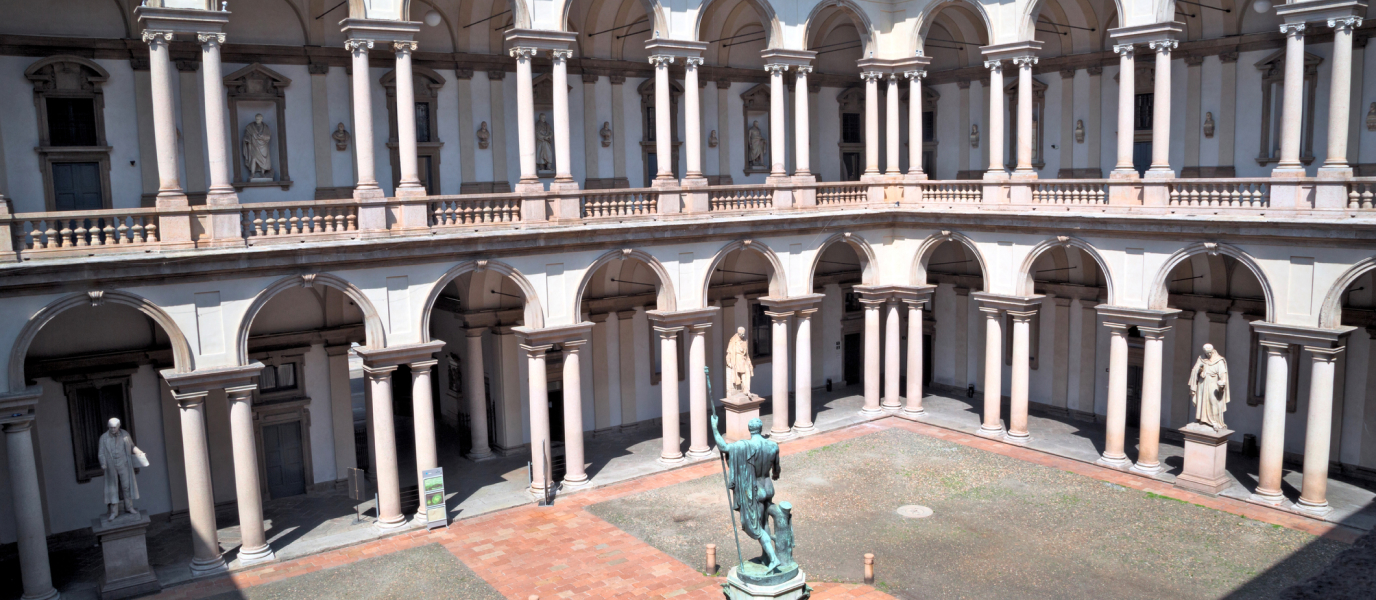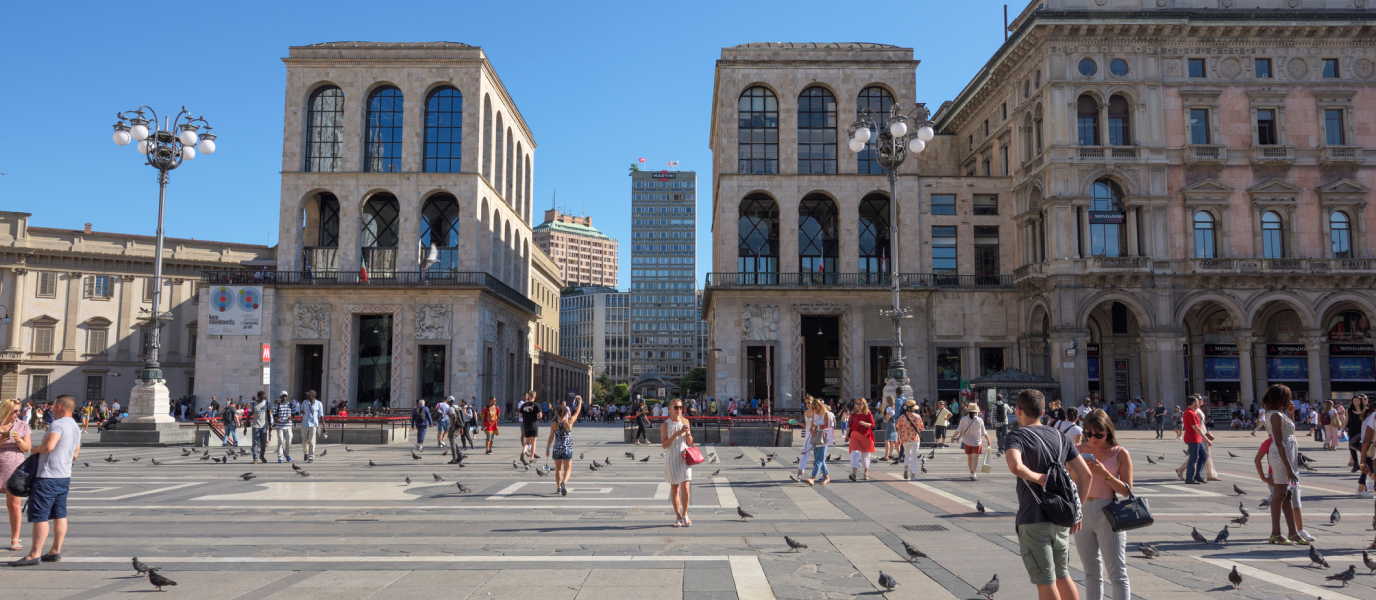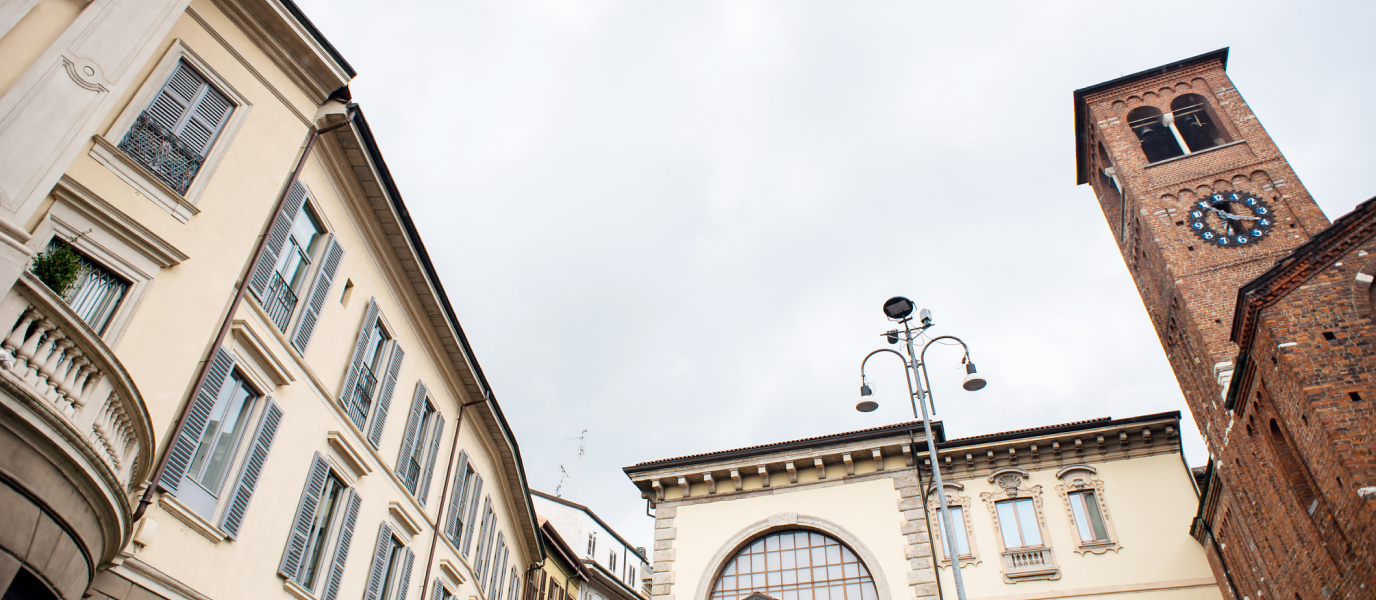Milan’s wealth of historic monuments and attractions is one of the city’s main claims to fame. Any art lover will be happy to spend hours strolling through its streets, exploring Milan’s most delightful spots. The bohemian Brera neighbourhood (internal link) at the historic centre of this Lombardy city will be heaven on Earth for visitors who enjoy a day seeing architectural gems and eating in trendy restaurants. Make sure you don’t miss the Pinacoteca di Brera, where you can see some of the most famous Italian art works in the world.
If you’re really passionate about art, you might also like to visit the Castello Sforzesco, which houses several museums.
The Pinacoteca di Brera, a space dedicated to art in Milan
The Palazzo Brera, the exquisite building which includes the art museum, was built on the site of a fourteenth-century monastery. In 1572, the site was given to the Jesuits, who established a school here, and in the early seventeenth-century, the architect Francesco Maria Ricchini took on the task of giving the palace the Baroque style we see today.
When the Jesuit order left Milan in 1773, the building passed into the hands of the government. At this point, Empress Maria Theresa of Austria stepped in, and decided to install several cultural institutions here, including the Academy of Fine Arts, the Lombardy Institute of Arts and Sciences, the Astronomical Observatory, a botanical garden, and the Braidense Library. All are still active.
The task of remodelling in order to expand the Palazzo Brera was entrusted to the neo-classical architect Giuseppe Piermarini, who was also a teacher at the academy.
The first works undertaken at the palace also had an educational purpose: to instil in the students a love for the classical. The museum’s holdings increased during the Napoleonic era. As Milan was the capital of the kingdom of Italy, pictures from various museums and abandoned monasteries were regularly transferred here to enhance the city’s prestige.
The Pinacoteca di Brera was officially opened in 1809, and during the Romantic period, the collection continued to grow. In parallel, the Academy of Fine Arts was establishing itself as a respected institution for the teaching of the History of Art. A few decades later, in 1882, the museum separated permanently from the Academy, and began to operate as a separate entity. During both the First and Second World Wars, the paintings had to be transferred elsewhere to ensure their safety.
Nowadays, the Pinacoteca di Brera is home to masterpieces by the likes of Raphael, Titian, Caravaggio, Rubens, and Rembrandt. You can see all of these on the walls of the art gallery.
The most important works at Milan’s Brera Art Museum
The building contains hundreds of works, from the Quattrocentro (1400 – 1499) up to the early avant-garde of the twentieth century. A delightful journey through Italian, French and Central European paintings that allows the visitor to trace the development of art down the centuries.
Once inside the Pinacoteca, you will discover one of Europe’s most outstanding art collections, right in the heart of Milan. There are some outstanding gems that you will want to linger over:
- Lamentation over the dead Christ by Andrea Mantegna. This realistic, harrowing canvas is one of the Pinacoteca di Brera’s great treasures. Painted in around 1483, during the artist’s maturity, it constitutes one of his masterpieces. The painting’s composition has a huge emotional impact on everyone who gazes at it. The violent foreshortening of Christ’s body, which is positioned as though almost perpendicular to the viewer, gives the impression of projecting out from the painting’s frame. The brilliant use of perspective combines with the artist’s handling of light and shadow. The whole is a declaration of intent to portray the death in a very direct way, without the slightest trace of idealism. The artistic expression speaks for itself.
- The marriage of the Virgin , by Raphael Next, we meet an early masterpiece by the exalted artist Raphael, painted in 1504. Raphael completed this work shortly before spending a period in Florence, where he came into contact with works by two other great Renaissance artists: Michelangelo and Leonardo da Vinci. This is a very special painting, in that it allows us to appreciate Raphael’s totally unique development from his early works. His masterly use of perspective endows the circular temple in the background with particular significance, in a tribute to Bramante’s architecture. A painting with a wealth of symbolism to explore.
- Supper at Emmaus by Caravaggio. With this canvas, the past master of Italian baroque painting amply demonstrates his technical brilliance. The use of chiaroscuro and tenebrism to create a powerful contrast between light and shade, the theatricality and drama shown by the figures depicted, the intimate atmosphere, and the delicacy of the colours — all these elements combine here in a demonstration of the unique style of Caravaggio. This work was completed in 1606, only four years before the artist’s death.
- The Kiss by Francesco Hayez. In 1859, when Italy’s political climate was more than a little heated and alliances were being formed to secure the future unity of the country, Hayez produced one of the crowning glories of the Romantic period. He recreates a medieval scene of a young coupe sharing a tender kiss. The strongly symbolic interpretation is irresistible — that these lovers represent the north and south of Italy finally embracing one another. The picture enjoyed such success that Hayez went on to paint several more versions.
These are just a few of the treasures to be found at the Pinacoteca di Brera. Works by Piero della Francesca, the Bellini family, Tintoretto, Correggio and Bronzino also await you in the various rooms of this wonderful art gallery.
And don’t forget to take a walk around the beautiful seventeenth-century courtyard and to admire its arcades. In the centre of the courtyard stands an enormous bronze sculpture of Napoleon as the god Mars, signed by the celebrated neo-classical artist Antonio Canova.
Useful information:
- Address: Vía Brera, 28, 20121, Milan.
- Official website: https://pinacotecabrera.org
How to get to the Pinacoteca di Brera:
- By metro: line 2, Lanza stop; line 3, Montenapoleone stop. By tram: routes 1, 4, 8, 12 and 27.
- By bus: routes 61 and 97.
- Opening times: Tuesday – Sunday: 8.30 a.m. – 7.15 p.m. Closed Monday.
- Price: Check up-to-date admission prices on the official website. Discounts are available to young EU citizens aged between 18 and 25. Admission is free on the first Sunday of each month. To avoid the queues, booking in advance is recommended. Entry to the palace courtyard is free of charge.






























































